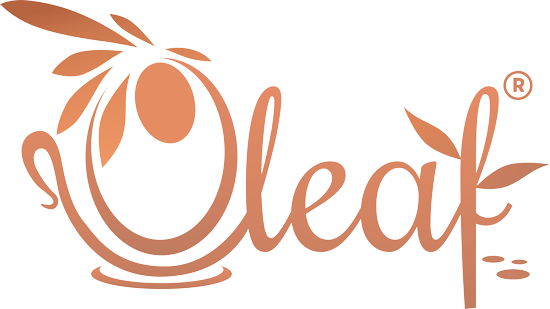Why CPG Companies Should Adopt a Culture of Content
Content
A beverage company uses data enrichment to get product development insights like this recent report on beverage trends from a data enrichment provider that showed a 55% increase in zero-proof (non-alcoholic) drinks. A typical goal for CPG marketers is to establish a direct connection with consumers, collect first-party data, use it to personalize their experience, and optimize business processes and strategies. The hard part is at the beginning—figuring out where consumers are and how to capture their attention. As you start manufacturing your product, you’ll want to track costs of production, packaging, distribution, and shipping. Consider tracking the cost of things like inventory managementso you have a clear picture of costs. If profitability escapes you after an initial launch, you’ll have some data to help you understand why. A simple example is, responding to every individual new item request from retailers can be time consuming and challenging.
- Cover their operations, their financials, their history, and distribution channels.
- I acknowledge and agree that my personal data may be processed in accordance with Mastercard’sPrivacy NoticeandTerms of Use.
- Infosys’ trade promotions management solution maximizes effectiveness across the TPM process – planning, execution and monitoring promotions.
- Instead, it opted to target high-end retailers and athletic stores, but even that is changing.
- GEP SMART is an AI-powered, cloud-native source-to-pay platform for direct and indirect procurement.
- Eye-tracking software can also analyze how visitors view your online product pages.
Adding behavioral data can provide consumer insights, and even help build direct relationships and inspire loyalty. The consumer packaged goods industry must acknowledge that some consumers want to research their products, their organizations, and their practices. It’s vital for brands traditionally distributed via brick-and-mortar stores to have a digital presence to enable consumer research.
Clorox beats Wall Street expectations but posts big volume losses after two years of price increases.
Alternately, they may lack the advantaged capabilities needed to win and grow. PwC research illustrates that value derives fromensuring the right fitbetween companies or brands. Deals will likely continue toflourishin 2022, building on the momentum in 2021. Divestiture activity also is likely to be strong, partly due to shareholder pressure to unlock value. Additionally, CPG leaders agree that the ability to react quickly to changing customer behavior may outweigh the benefits of scale.
Brenner advises that messages you create should make the customer the hero, exhibit empathy for the issues they are facing, and appeal to their emotions. Moreover, publishing audience-focused content consistently is more effective than doing so infrequently.
Consumers embracing D2C brands and business models
With vast swaths of the world’s population residing in these markets, addressing affordability with different consumer needs can drive additional scale. CPG leaders are reshaping product portfolios to bolster their ability to grow, even amid disruptive forces. They are closely examining the product categories where they reinvest — at both the premium and value levels — to address consumer needs. Consumer durables, also known as “durable goods,” are consumer goods that do not wear out quickly and therefore do not have to be purchased frequently. Unlike CPGs, which are cheaply sold and replaced often, durable goods like automobiles are intended to last for several years and enjoyed for extended use. Consequently, the purchase of a durable good typically involves considerable thought and substantial comparison shopping, given the higher price-tags attached to these investments. And as the name implies, CPGs are traditionally packaged in easily-recognizable wrapping that consumers can quickly identify.
Addressing their needs requires more transparent consumer interactions, as well as an increase in the kinds of information customer want to access. To deliver it, brands need a centralized master data management foundation to provide accurate, trustworthy data to retail partners and consumers, while maintaining a strict system for data privacy and governance. Consumers are hit with digital messages from brands every second of the day, whether they’re checking email or scrolling social media feeds. But without a sense of connection to that brand or highly relevant and timely messages, that digital communication often gets ignored. Hyper-personalization means tailoring every interaction to the consumers’ needs and preferences across digital and non-digital channels. CPG companies face a constant battle to increase their market share & gain more retail shelf space. Pricing & brand may be important, but robust Distribution Management systems & Supply Chain Networks are critical in providing a cost advantage – which is where spatial analysis comes in.
Related content
CPGs require a single platform encompassing a wealth of data from macro to item-level. This will be key to delivering sophisticated and predictive insights, longitudinal customer views, cross retailer comparisons and more sophisticated shopper segments for optimized targeting. Today’s CPGs can benefit from managing cpg accounting both B2B customer data and end-customer data. Multi-domain MDM helps CPGs identify activity around a customer and update the profile accordingly. For example, if a consumer fills out a form online about a product, the system can collect data about their household, demographics, preferences, and buyer behavior.
Explore the impact of #brand health measurement including: how poor brand health can harm your company, how brand measurement can be incorporated to support business goals and more #CPG https://t.co/wHMwnLZJSw pic.twitter.com/hlUlnWpcrF
— Hanover Research (@HanoverResearch) November 10, 2022
Today, CPG companies succeed by generating leverage over retailers by offering a variety of goods through horizontal integration. Conversely, retailers are vertically integrating, and offering their own private label goods to compete with CPG companies.
Once you have a first draft of your CPG business plan, get a business advisor or a business person you respect to cast an eye over it. All of this will help make your CPG business plan accessible to a reader and make all info digestible too. You want to get across the idea behind your business and product in the simplest and most succinct way possible. Meeting more modest targets will give investors more confidence in your business and your financial understanding. This describes the company’s current financial position, including assets, liabilities, and any shareholders. Detail the organizational structure of your business and a little about key players. Also give information about your location, premises, and equipment — and whether these can scale as the business grows.
Focus groups and many types of interviews provide some observation, but if you want deeper insight into your customers’ shopping and product usage behaviors, consider employing an observation-centric research method. For example, you could ask participants to video themselves using a product at home.
Reimagining PBNA’s frontline experience
The margin is the difference between what the retailer paid the CPG company, minus the retailer’s labor and fixed costs. This graph doesn’t include all retailer considerations (consumer preferences, product demand via mass advertising, differences in revenue per square foot of shelf-space, etc.). Still, you can certainly see why retailers want to get to vertically integrate through private label. When a CPG company sells through other online retailers, they miss out on first-party data and lack a clear understanding of their customers.
- Consumers are driven by incentives and unique experiences that naturally tie back to their own values.
- Photo by Bernard Hermant / Unsplash Consumer packaged goods companies are everywhere.
- The consumer packaged goods industry must acknowledge that some consumers want to research their products, their organizations, and their practices.
- CPG makers and their retail partners have had to make a lot progress to address these trends.
- To gather data from existing customers, you can include the survey link in your receipts, on the purchase page of your e-commerce site or at the end of a customer service call.
Let’s say you’ve convinced a category manager to give you a spot on the shelf. While the big CPG brands have money to burn, your bootstrapped startup probably doesn’t. Across industries, the point of business intelligence is to take the guesswork out of growth. When you have data to drive decisions, you can mitigate the risk inherent to growing a business. Whether you’re a CPG manufacturer, real estate mogul, or dog walker, you have to spend to grow. By clicking submit, I am requesting that Mastercard send me information about Mastercard business products and services. I acknowledge and agree that my personal data may be processed in accordance with Mastercard’sPrivacy NoticeandTerms of Use.





binance account creation
I don’t think the title of your article matches the content lol. Just kidding, mainly because I had some doubts after reading the article.
tinyurl.com
https://rebrand.ly/a89b65 http://ubezpieczenia-warszawa.com.pl https://cutt.ly/WHvbqgm http://ubezpieczeniatarnowskiegory.com.pl/ https://rebrand.ly/4ae84c https://bit.ly/3weBAt1 https://Rebrand.ly/86dbc4 https://bit.ly/3MlFoOz https://is.gd/h67KaV https://rebrand.ly/aeb626
https://is.gd/rC2GTf https://cutt.ly/BHvcZPK http://Ubezpieczamtanio.pl/ https://is.gd/ZNvcuk https://rebrand.ly/668ac1 https://tinyurl.com/5n7kuray https://tinyurl.com/bdfpxcwz https://is.gd/7Mwnmi https://is.gd/JECJVc https://is.gd/PcBHQZ
tinyurl.com http://malopolskaubezpieczenia.pl rebrand.ly bit.ly
http://kancelaria-ubezpieczen.pl bit.ly rebrand.ly https://is.gd
tinyurl.com
rebrand.ly https://tinyurl.com/5bwmm2cf tinyurl.com bit.ly
is.gd ubezpieczenia-nysa.pl rebrand.ly
ubezpieczenia-dabrowa.pl
https://bit.ly/3PoGwD5 https://Cutt.ly/JHvbOy1 https://rebrand.ly/c237ee https://bit.ly/3PoLnnH https://is.gd/pbAplZ https://bit.ly/3wi8pFr https://Rebrand.ly/c2f455 https://bit.ly/39Slb4E https://is.gd/k1omQU https://rebrand.ly/aeb626
https://rebrand.ly/7a1275 https://bit.ly/3wsxr3z https://is.gd/vSr3BK https://is.gd/mWnp3o https://Cutt.ly/tHvvVnv https://rebrand.ly/668ac1 http://e-ubezpieczenie24.pl http://teamubezpieczenia.pl http://ubezp-ocac.pl https://rebrand.ly/70113d
ubezpieczenia-dabrowa.pl bit.ly
bit.ly is.gd tinyurl.com https://is.gd/PcBHQZ ubezpieczsieznami.pl terazubezpieczenia.pl
is.gd cutt.ly is.gd tinyurl.com rebrand.ly https://rebrand.ly/2b4251
cutt.ly https://rebrand.ly
binance
Your point of view caught my eye and was very interesting. Thanks. I have a question for you. https://accounts.binance.com/ar/register?ref=IQY5TET4